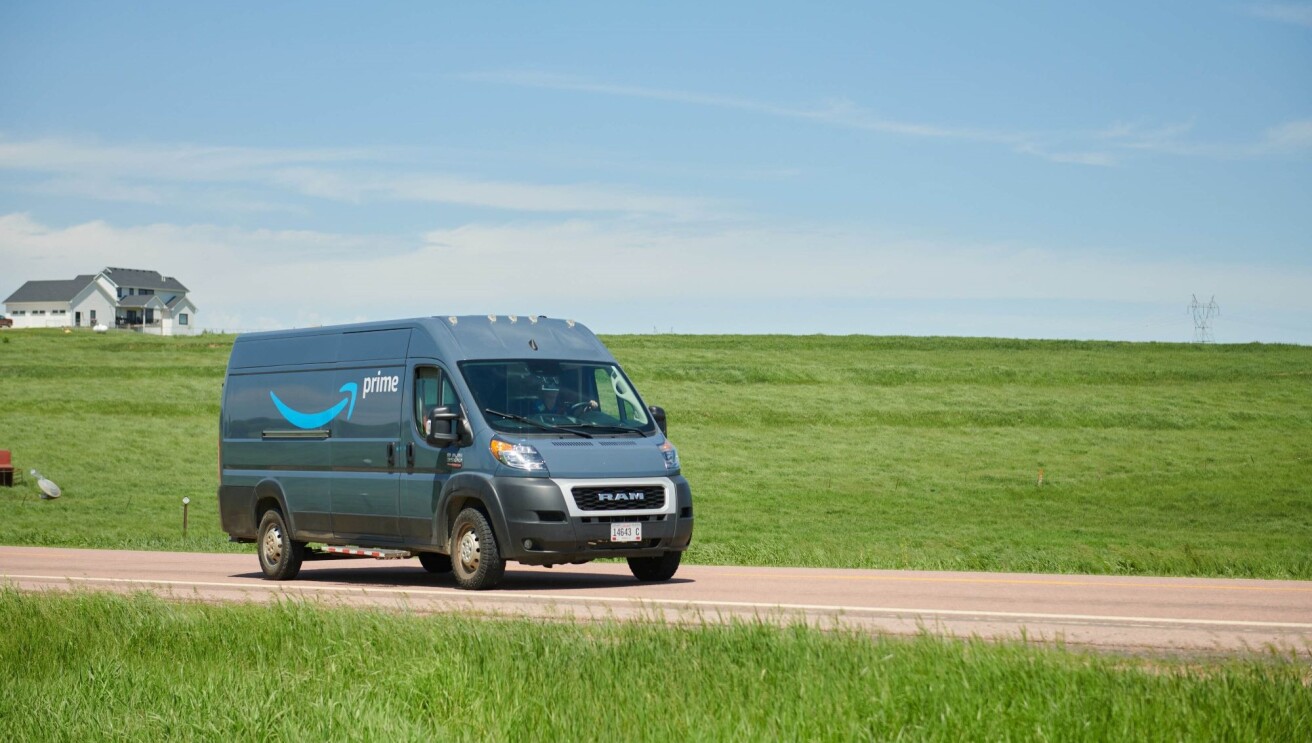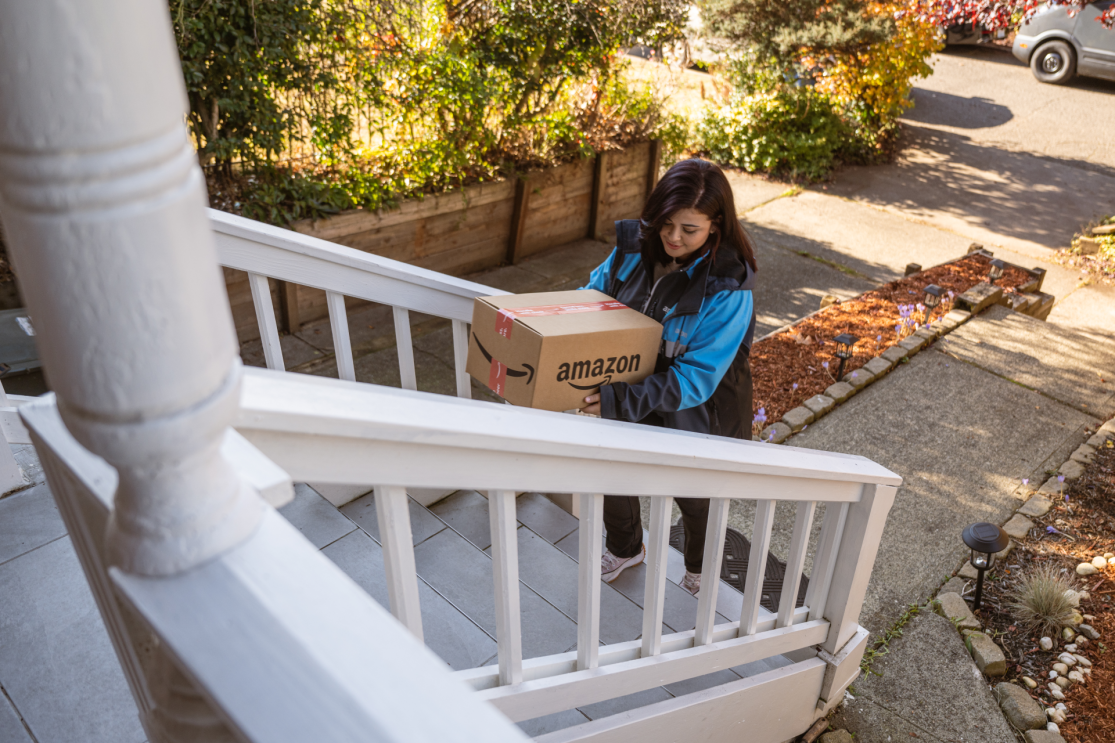Amazon is using a simulated driving experience to help delivery drivers feel more comfortable getting behind the wheel for the first time. The custom simulator uses three large monitors, a wheel, a seat, and a dashboard to recreate the experience of driving one of our electric delivery vans from Rivian . The whole setup is reminiscent of a super-realistic driving game, and it was developed in partnership with Advanced Training Systems (ATS), a company that uses aerospace-derived technology to create simulated experiences for commercial driver training programs.
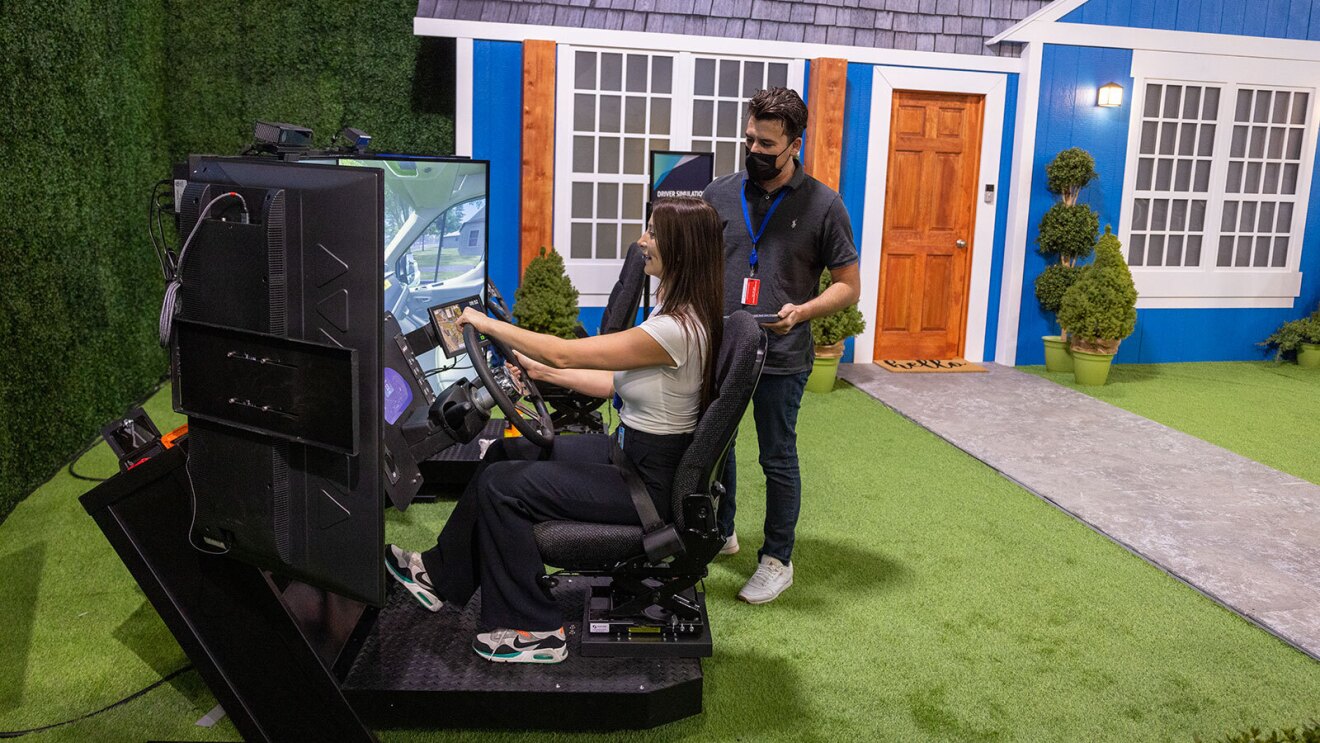
“The technology we developed for Amazon allows drivers to fail safely,” said Enrique Mar, director of training and integration at Advanced Training Systems. “New drivers can learn how to navigate situations that would be too dangerous to test in real life. One hour in a simulator is equal to four hours on the road, so trainers are also able to get more drivers up to speed faster.”
Drivers at training facilities in Denver, Colorado have been the first to try a three-day course using the simulator, which prepares them for obstacles like pedestrians and pets in the street, inclement weather, traffic accidents, and Amazon-specific scenarios like loading the van, unloading, and returning the vehicle.
I had a chance to try the technology, and I was pleasantly surprised by my driving score. Here’s a rundown of what I learned while taking the simulator for a spin.
The simulation is modeled after actual streets in Los Angeles and it follows real delivery routes to make the experience feel about as real as possible.
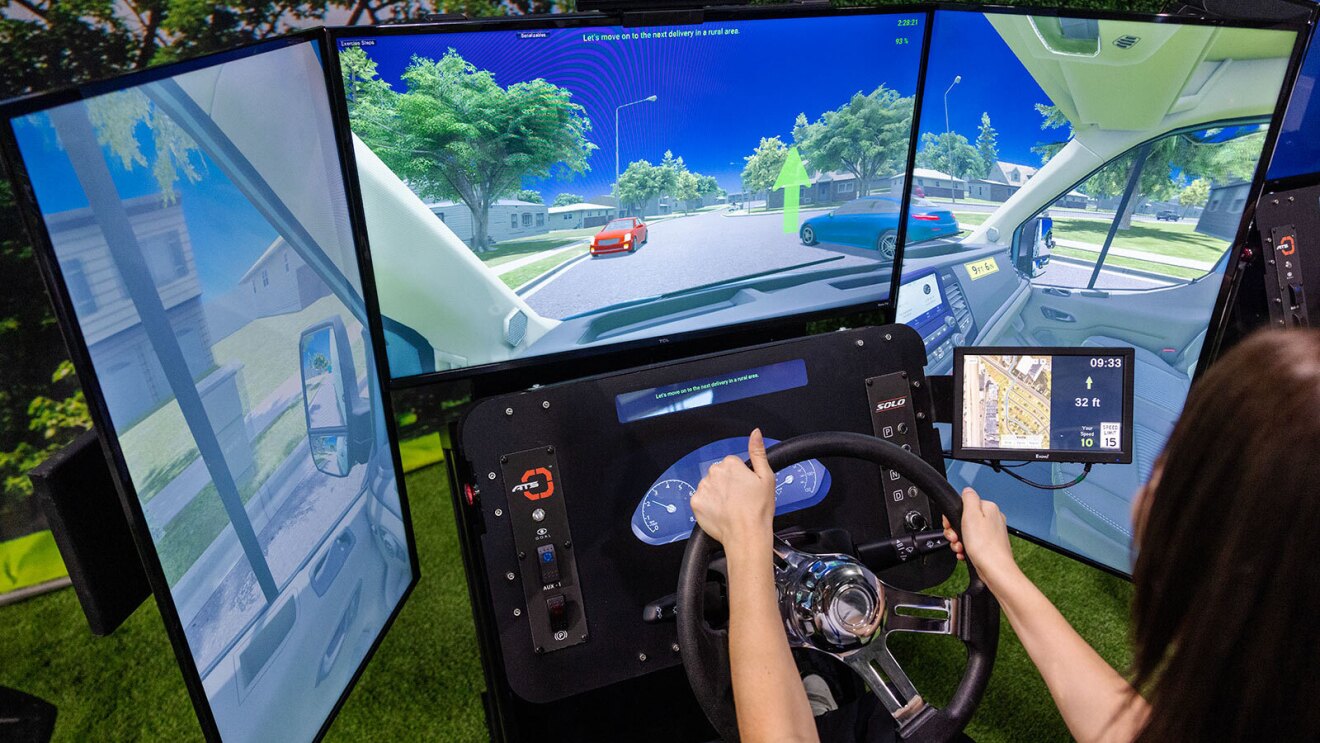
The speed limit was set to 15. This took some getting used to, but I quickly learned that slow and steady speeds would be the key to success—the simulator generates a score at the end.

Controls in the vans are a bit different from a standard vehicle—buttons are used to shift between gears and it takes a moment to get used to the size of the dashboard.
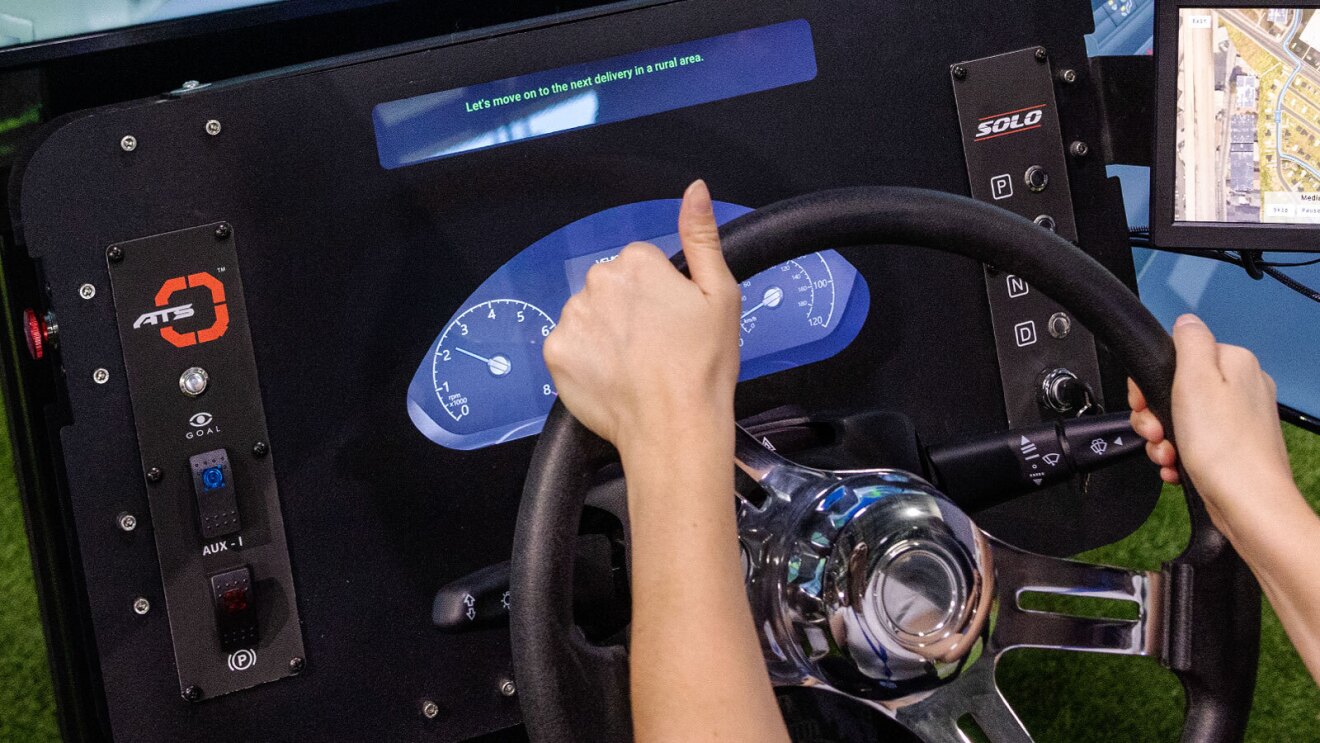
I was doing alright, so Mar turned on the rain simulation. Once I got the windshield wipers on, the rain wasn’t all that bad.
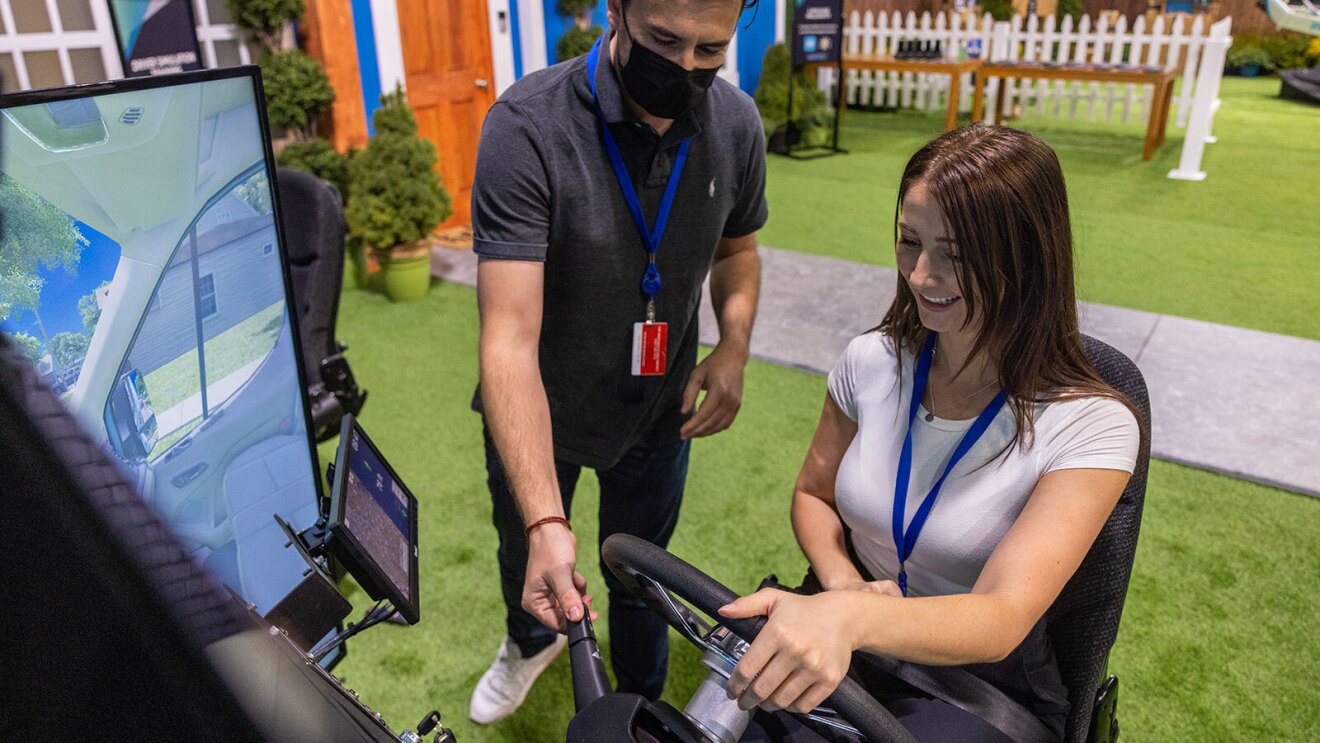
The characters on the screen interacted with you like they would in real life—a kid who darted across the street waved at me as a “thank you” when he got to the other side of the road safely, and the pets were on standby as I pulled into driveways.
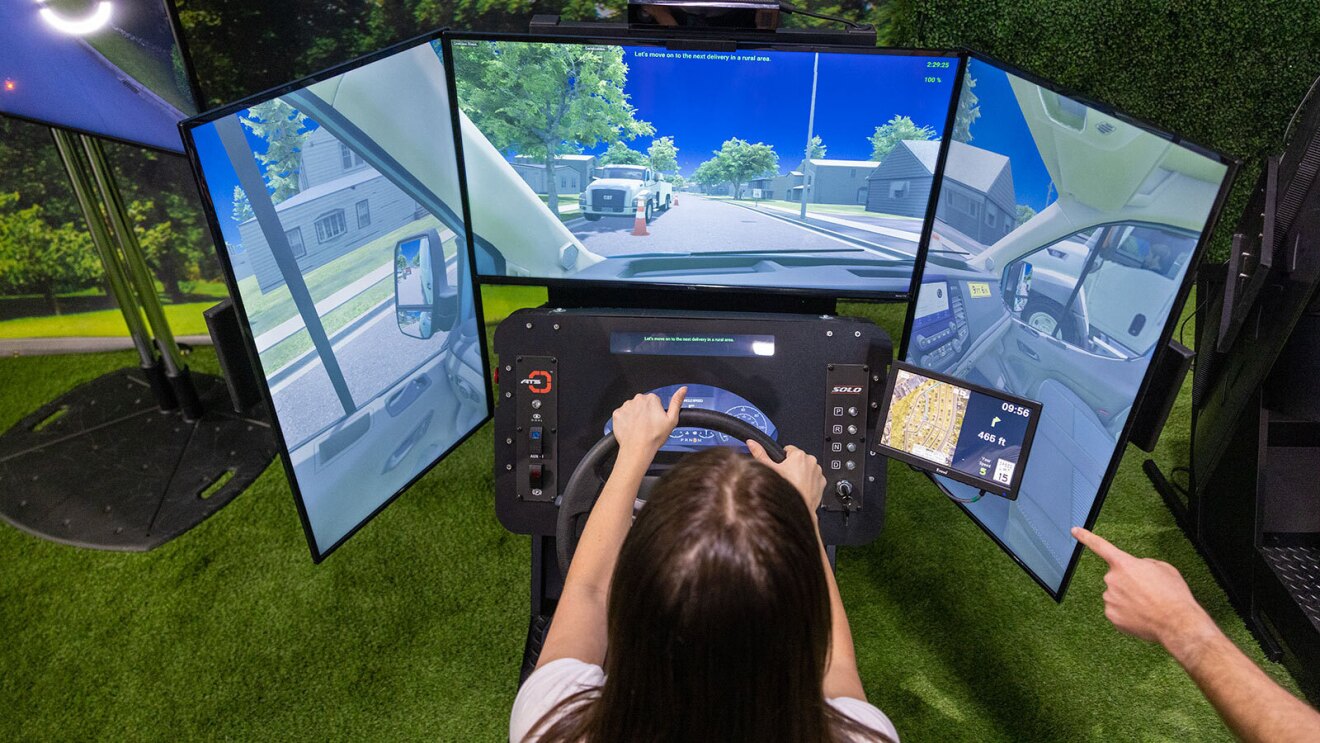
When you’re driving a vehicle the size of our delivery vans, the weight shifts. The simulator moves the seat to give drivers a sense of what that might feel like.
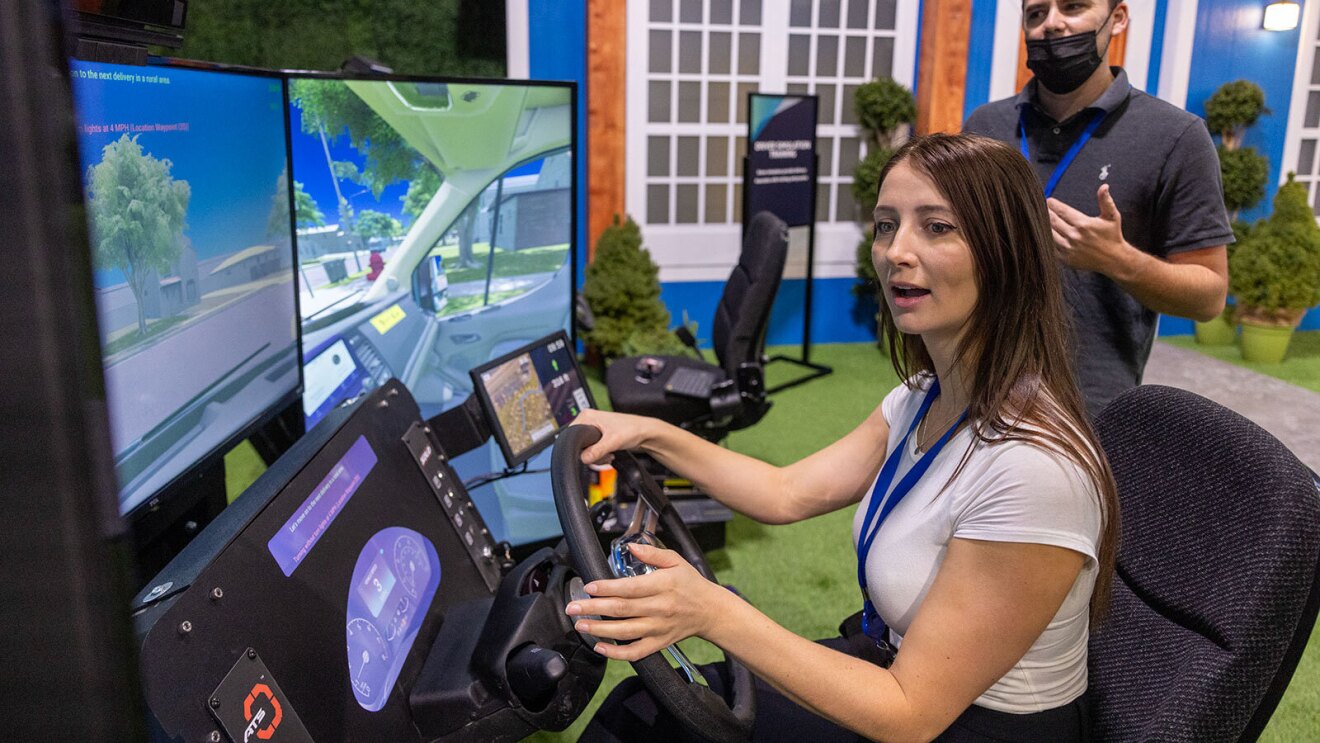
Aside from one traffic cone at the start, I had zero causalities during the simulated drive, but avoiding the obstacles wasn’t easy. You need a score of 80% or higher to pass. I earned 89%, but that doesn’t mean I’m ready for the road quite yet.
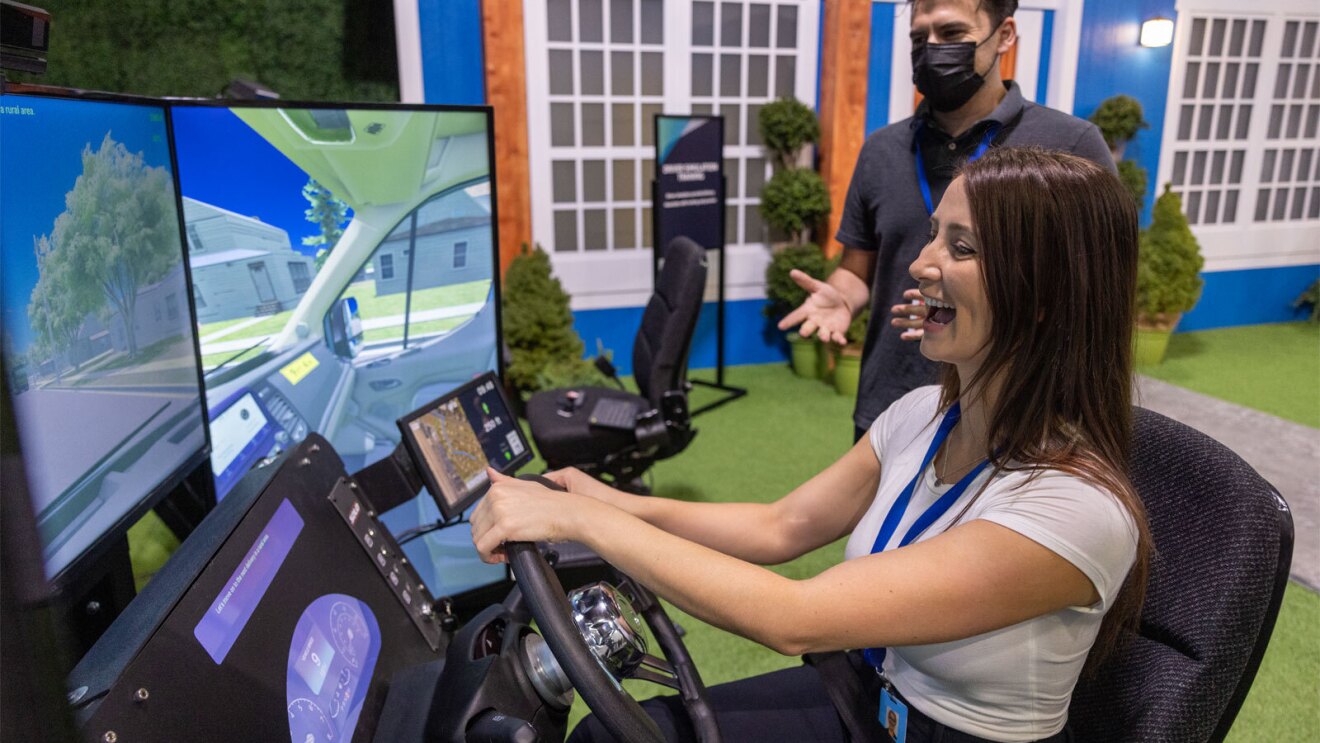
The training and tests are much more in depth—and likely come with a far less guidance than the demo—but that won’t stop me from bragging.
Delivery drivers undergo specialized training to fully understand the ins and outs of their vehicles before they hit the road. Simulated training is just one of the many innovative training tools the company is using to help keep drivers and communities safe as we continue to invest in our Delivery Service Partner network. Learn more about what it takes to be a Delivery Associate.
Trending news and stories
- Amazon unveils 7 new robots powering faster, safer deliveries: Go inside our most innovative delivery station yet
- Introducing Vulcan: Amazon's first robot with a sense of touch
- This new AI tech will make sorting packages easier for Amazon's delivery station employees
- 15 photos from Project Kuiper's first launch of low Earth orbit satellites



